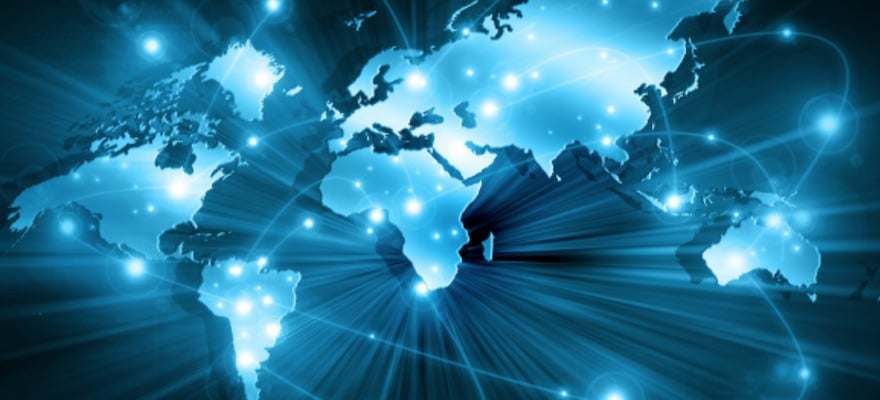The COVID-19 pandemic has been raging throughout the world for upwards of four months, and while the epicenter of the crisis may have passed, the storm left serious damage--and the revelation of much important information--in its wake.
The pandemic seemed to have a particularly strong knack for exposing systemic weaknesses; countries around the world saw failures in their healthcare and social welfare systems; companies were forced to quickly rethink and overhaul their daily operations.
One of the most significant weak spots that the pandemic exposed, however, was the supply chain sphere: as the virus continued to spread, communication breakdowns, a lack of workforce, and other problems caused serious interruptions in the global supply chain flow.
Through SiGMA’s AIBC Digital Conference in June, Finance Magnates reporter Rachel McIntosh spoke to SingularityNet chief executive and chief scientist Ben Goertzel, as well as UNISOT founder and chief executive Stephan Nilsson, about how the pandemic affected supply chains and how Blockchain and AI can be used to build a better supply chain system.
Finance Magnates · Blockchain Podcast #131 -- Ben Goertzel (SingularityNET) & Stephan Nilsson (UNISOT)
This is an of that excerpt. To hear Finance Magnates’ full interview with Ben Goertzel and Stephan Nilsson, presented and conducted through SiGMA’s AIBC Digital Conference, visit Soundcloud or Youtube.
"Multiple levels" of problems in the global supply chain system
Why are supply chains particularly vulnerable at this particular moment in time?
Ben Goertzel explained that supply chain systems are rife with many points of failure: “you have multiple levels of problems here.”
For example, “in terms of what we see in Hong Kong--when you order something made in China from an English-language website that’s based in the US, that website may have been put online by someone in Hong Kong; but how does this stuff get there?”

Ben Goertzel, SingularityNET chief executive and chief scientist.
“Often, there’s someone in Hong Kong who will make a physical trip across the border every week or two to China,” he said. “They go into some city in remote China, and they bring back what could be a bunch of suitcases or a truck across the border into Hong Kong; they put the stuff in boxes in a warehouse in Hong Kong, and they ship it out.”
However, the pandemic has caused congestion in supply chains: “for one thing, that border hasn’t been operating for a while,” he said. “Hong Kong has limited warehouse space: you don’t want to [store] things for too long there; [typically], things are stored in China and then brought over as needed.”
A vastly outdated system
Stephan Nilsson added that communications in supply chains are still extremely low-tech: “what we see when we are talking to customers is that even today, in 2020, the digitalization level is very low [in supply chains], actually,” Nilsson explained. “A lot of companies are still using Excel or Google Docs to share documents, or even down to pen and paper to store temperatures.”
Additionally, “all of the transport documents in trucks and boats and so on are still paper-based,” he continued. “Because they are paper-based and manual-based, they are hit very hard if there is a situation like this, when people are not allowed to go to work, or they are simply sick and cannot go to work.”
“What many people don’t think about is that everything, more or less, is supply chain-based today. Everything you buy--your phone, your clothes, your computer, your food--comes from a supply chain, which has all of these manual steps.”
For blockchain and AI, "the raw capacity...is certainly there"
In other words, “you’ve got very basic, low-brow, on the ground problems,” Ben Goertzel said. “People can’t get from A to B, or things are sitting in a warehouse because the guy who has to [stamp] the form isn’t in the office.”
However, “once you bypass those problems, then you get to the higher-end problems.”
What are these higher-end problems?

Stephan Nilsson, UNISOT founder and chief executive.
For example, “ok, when one thing isn’t working, can an automated system figure out how to route around it?,” Ben Goertzel pointed out.
“Often, it probably could...in electronics, for example, in South China--it’s amazing how many spires there are, and how many different ways there are to fulfill a certain need,” he said.
In other words, “the raw capacity in terms of diversity is certainly there for AI running on a blockchain to do amazing automated fulfillment; to dynamically figure out the best way to get what is needed along multiple chains.”
Improving supply chain flow with blockchain
How exactly could blockchain and AI work together to improve supply chain flow?
“Blockchain is a distributed system that nobody owns,” Stephan Nilsson explained. “If you look at the supply chain, it’s the same thing: it’s a number of companies loosely connected. That’s why we have a very good fit between blockchain and supply chain,” he continued.
However, “we have to get to a certain level of digitalization of the companies and the people in the supply chain just to get it going,” he continued. “...And we see that the digitalization speed it getting quicker; more and more companies understand that they have to digitalize and get more automated.”
“But as soon as we have more digital tools--just to report things, to have transport documents: electronic forms, and so on--when we can put that in the blockchain, when we have that, then we can start implementing machine learning and AI on this to ‘route around’ problems.”
This technology could also be used to “verify information from IoT sensors and so on.”
Indeed, “when you get values like temperature, weights, locations, and so on--then you can use machine learning or AI to give that a value on how accurate the information is. It can also help us automate between companies,” he continued. “Here also we get into the Smart Contract functionality of blockchain.”
Trust is an integral part of both blockchain and supply chain
Ben Goertzel added that blockchain is a great fit for supply chain applications because “the most obvious strength of a blockchain solution is that you have multiple counterparts in transactions” that you may not be able to completely trust, but with whom there is still a need to cooperate.
“You have that very exactly in this supply chain--you’re passing stuff from entity to another, to another, to another, to another, and there’s reasonable trust between each of the parties in this supply chain, but they each have their own motives and their own records: there’s not total trust.”
Ben also pointed out that “it’s also the case that you don’t have thousands of transactions every second like you would in high-frequency trading,” and that therefore, “in a supply-chain context, it’s ok that transactions today are on blockchains today are not as fast” as some other, centralized transaction platforms could manage.
“The performance requirements are not the same as in fintech applications, which has been a big focus in the blockchain world,” he said. “So, I think that the current technology could basically ‘do it’--and it actually solves an extremely present, glaring problem, which is that records are kept inconsistently and not updated properly; there’s not really a coherent record of what’s going through a whole supply chain, in many cases.”
Building a system that works could be a challenge
Ben also pointed out the fact that getting companies along any given supply chain to adopt a blockchain solution--or even multiple interoperable blockchain solutions--will be a challenge.
However, Stephan Nilsson said that what his company is working on is building a blockchain solution that “will make it very easy for companies to start using blockchain.”
“Companies shouldn’t have to learn about blockchain,” he said, drawing a parallel to the fact that all companies “are using the internet today for communication.”
“Even sensitive information to your bank and to your suppliers and customers and so on are going to the public internet, but everything is encrypted,” he said. “We do the same thing with an open, public blockchain: we are communicating on an open, public blockchain, but everything is encrypted and secure.”
This is an of that excerpt. To hear Finance Magnates’ full interview with Ben Goertzel and Stephan Nilsson, presented and conducted through SiGMA’s AIBC Digital Conference, visit Soundcloud or Youtube.
Special thanks to Ben, Stephan, and the SiGMA team.

















